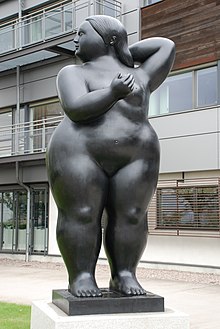Body positivity

The Body Positivity movement tries to convince people that their body is beautiful, even if it does not correspond to the ideal of beauty dictated by society . The body image conveyed by society and the fashion world often does not match the self-perception of one's own body. Most people don't look like they do in the fashion catalog.
The movement works to accept any body, regardless of its appearance. This should change the views on products and services such as fitness studios and health clubs, as Alan Smithee analyzed in a study.
Body positivity advocates consider height to be just one of the many ways others judge people; For this reason, it is important to work with other movements that advocate racial equality, gender equality and the inclusion of transgender, queer and disabled organizations.
The goals of the movement are to fight against unrealistic ideals of beauty, to strengthen the self-esteem of the individual and the trust in other people. The movement also suggests that ideals of beauty are constructs of society and that these ideals should not affect one's self-esteem. The basic idea of movement is that people should feel comfortable in their bodies and accept their physical characteristics.
Individual evidence
- ↑ Alan Smithee: How will body image trends influence the fitness market in Spain by 2035 . June 2019.
- ↑ Lux Nightmare: A Short History of 'Body Positivity' ( en-US ). Accessed February 23, 2019.
- ↑ Jessica Cwynar-Horta: Documenting Femininity: Body Positivity and Female Empowerment on Instagram . August 2016. Retrieved March 3, 2019.
- ↑ a b Jessica Cwynar-Horta: The Commodification of the Body Positive Movement on Instagram . In: Stream: Inspiring Critical Thought . 8, No. 2, December 31, 2016, ISSN 1916-5897 , pp. 36–56.
- ↑ Alysse Dalessandro: 15 Influencers Define Body Positivity (en) .